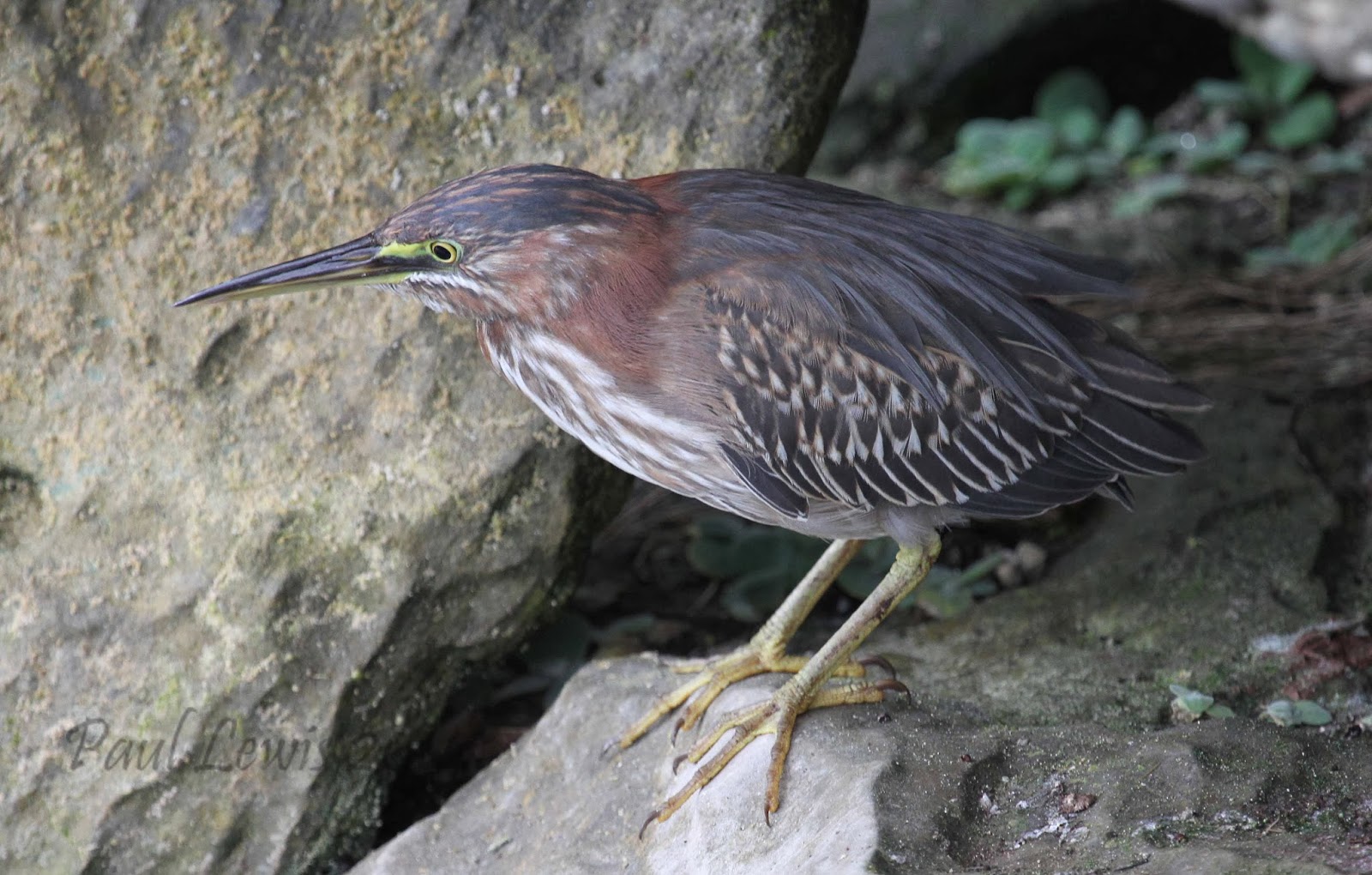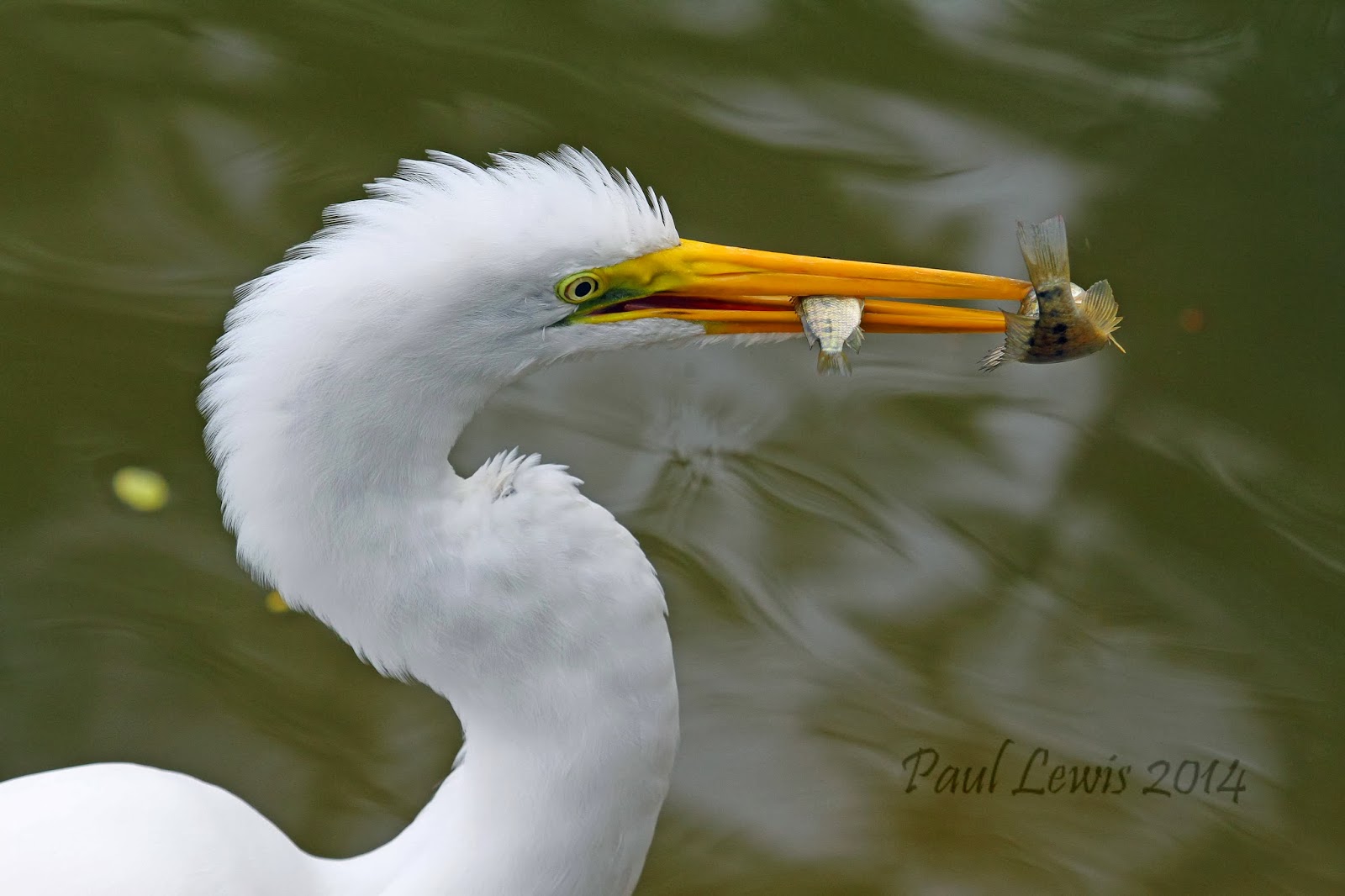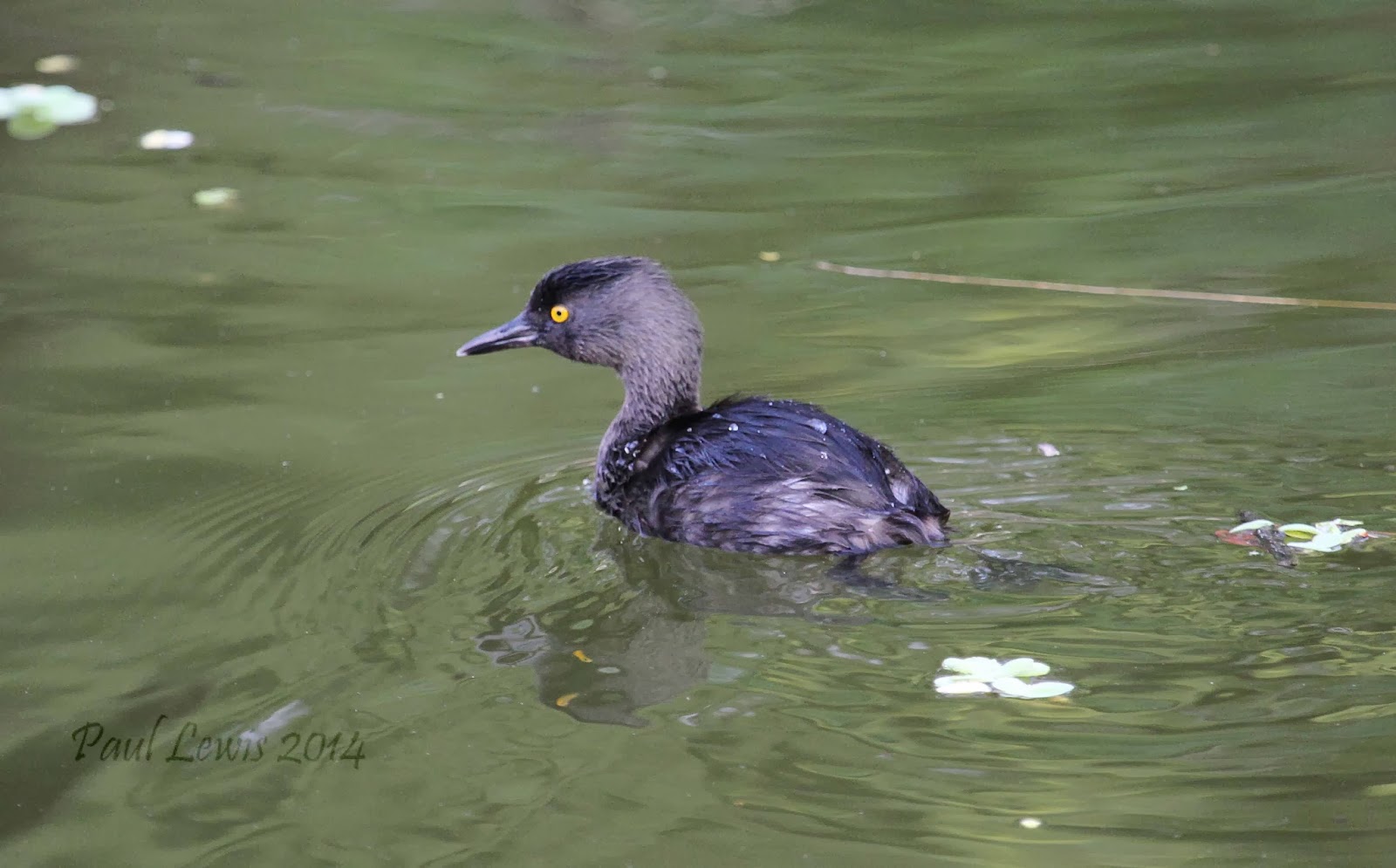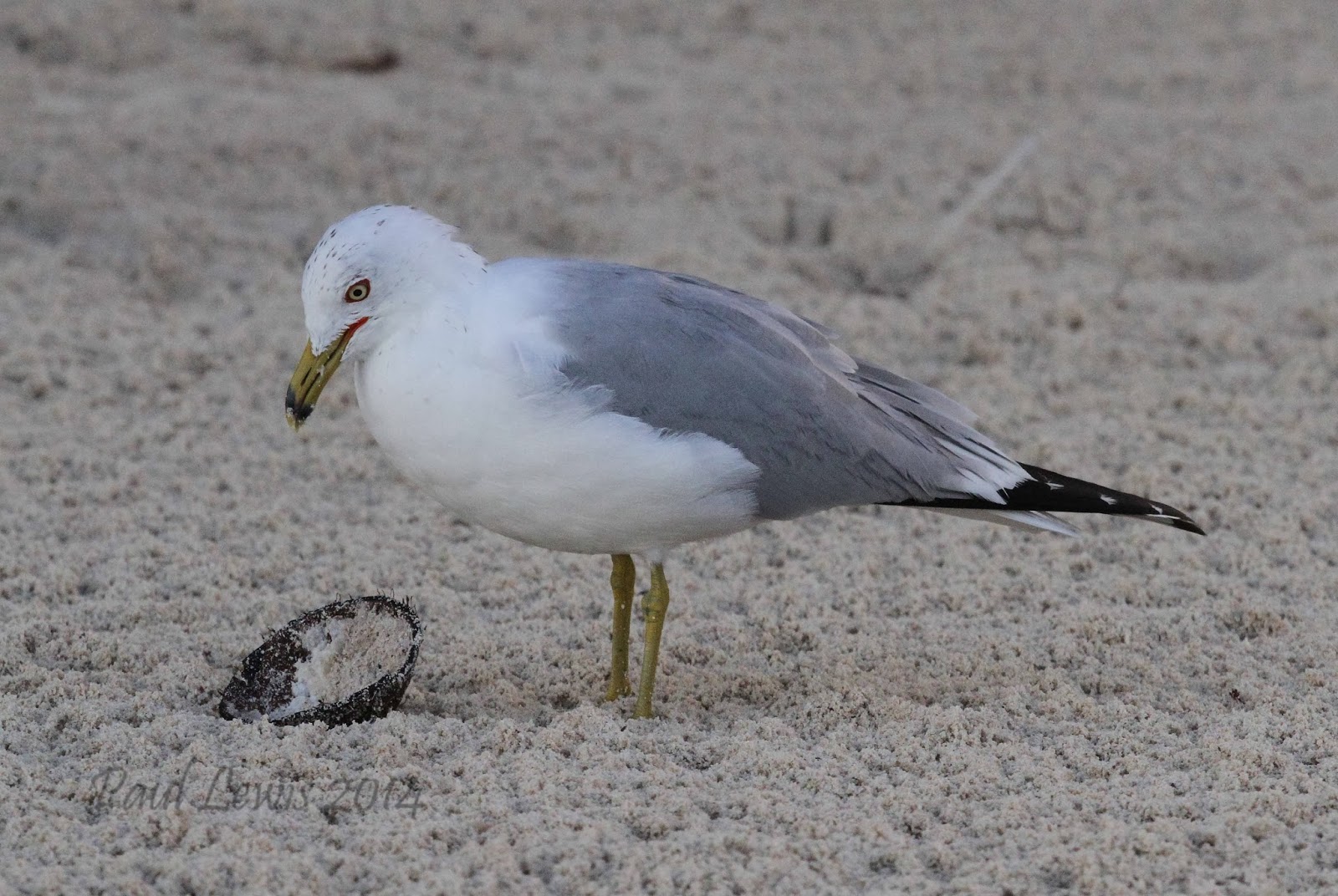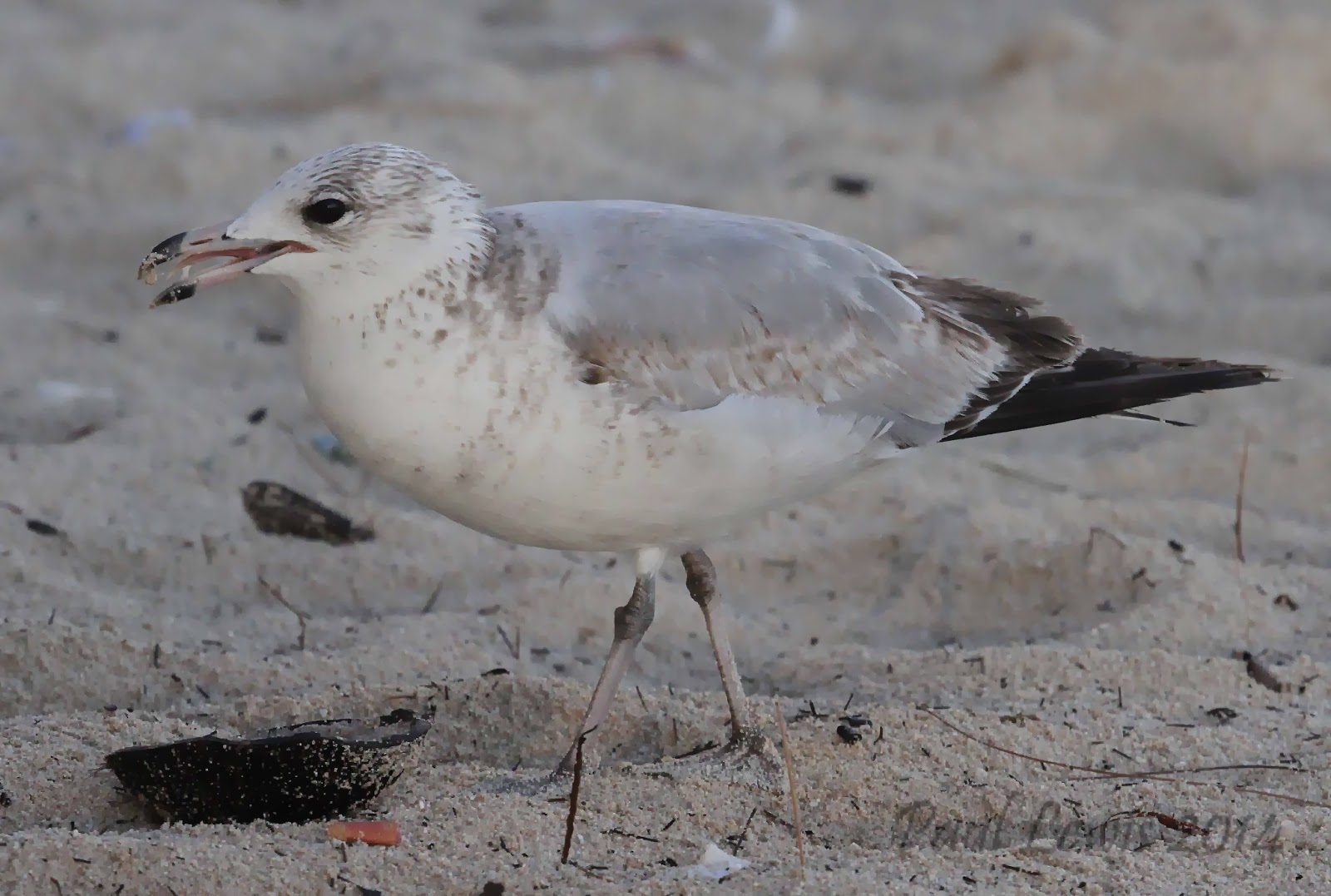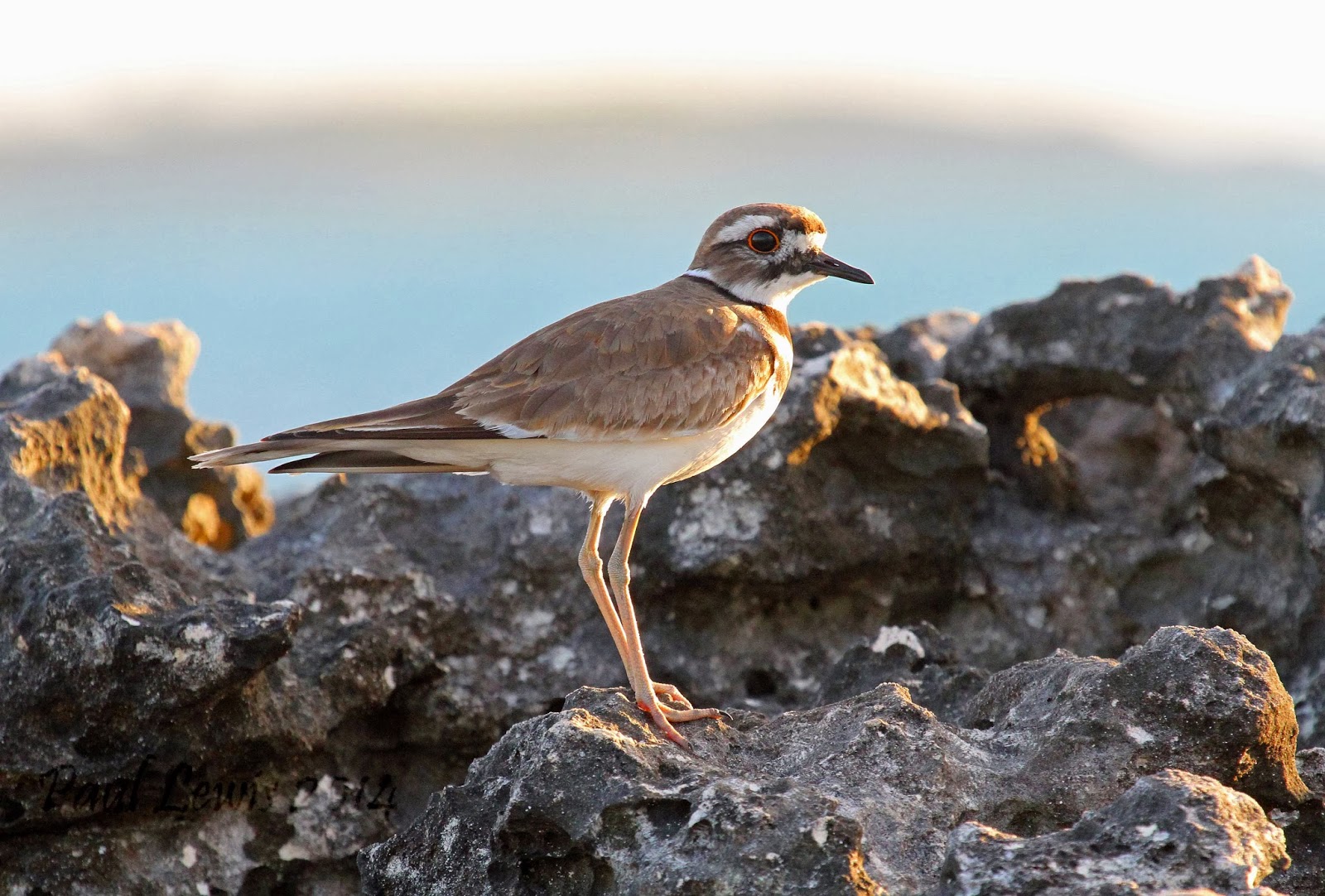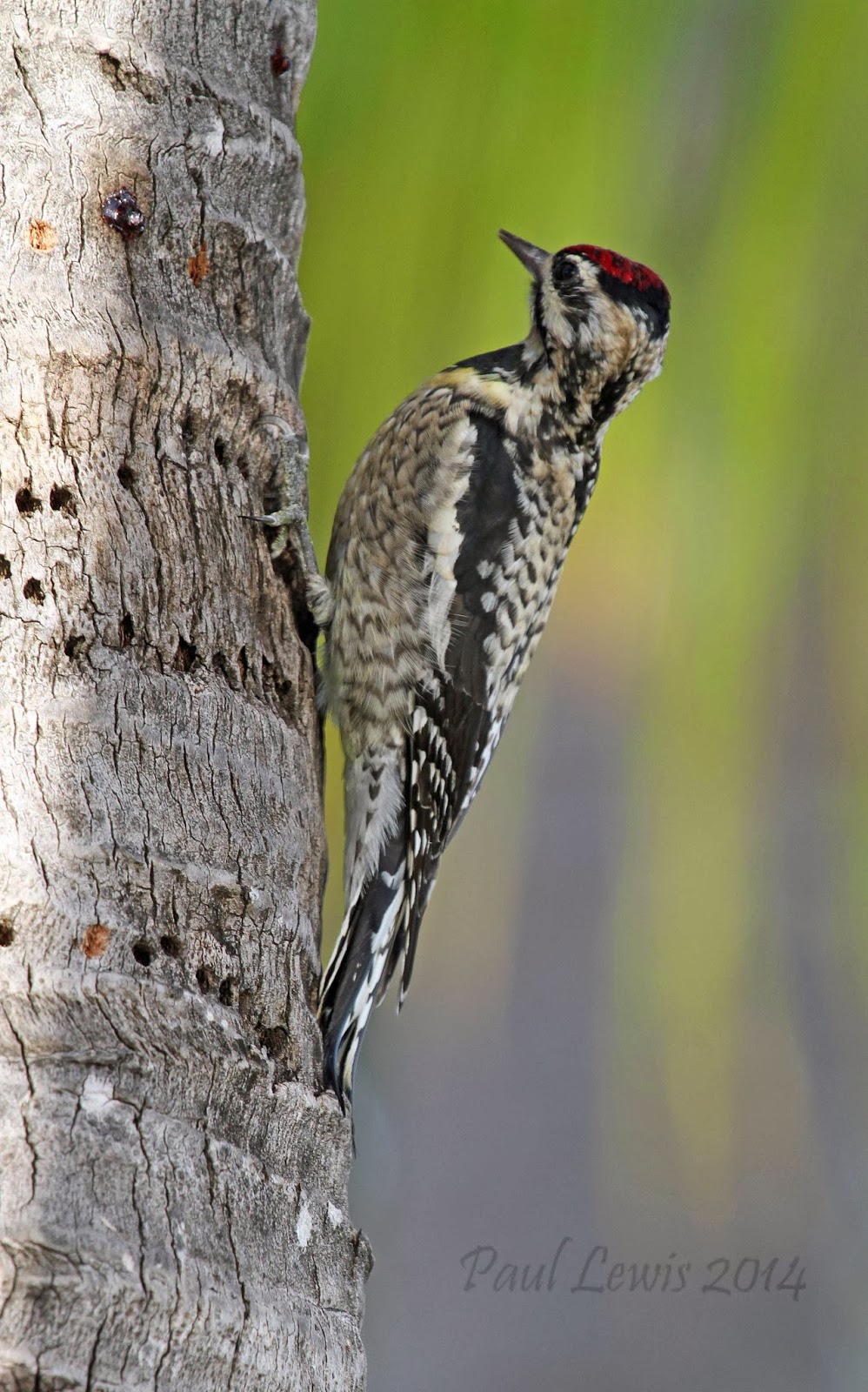An account of my birding activities usually in and around the Maple Cross area but also including trips throughout the British Isles and the rest of the world.
egret
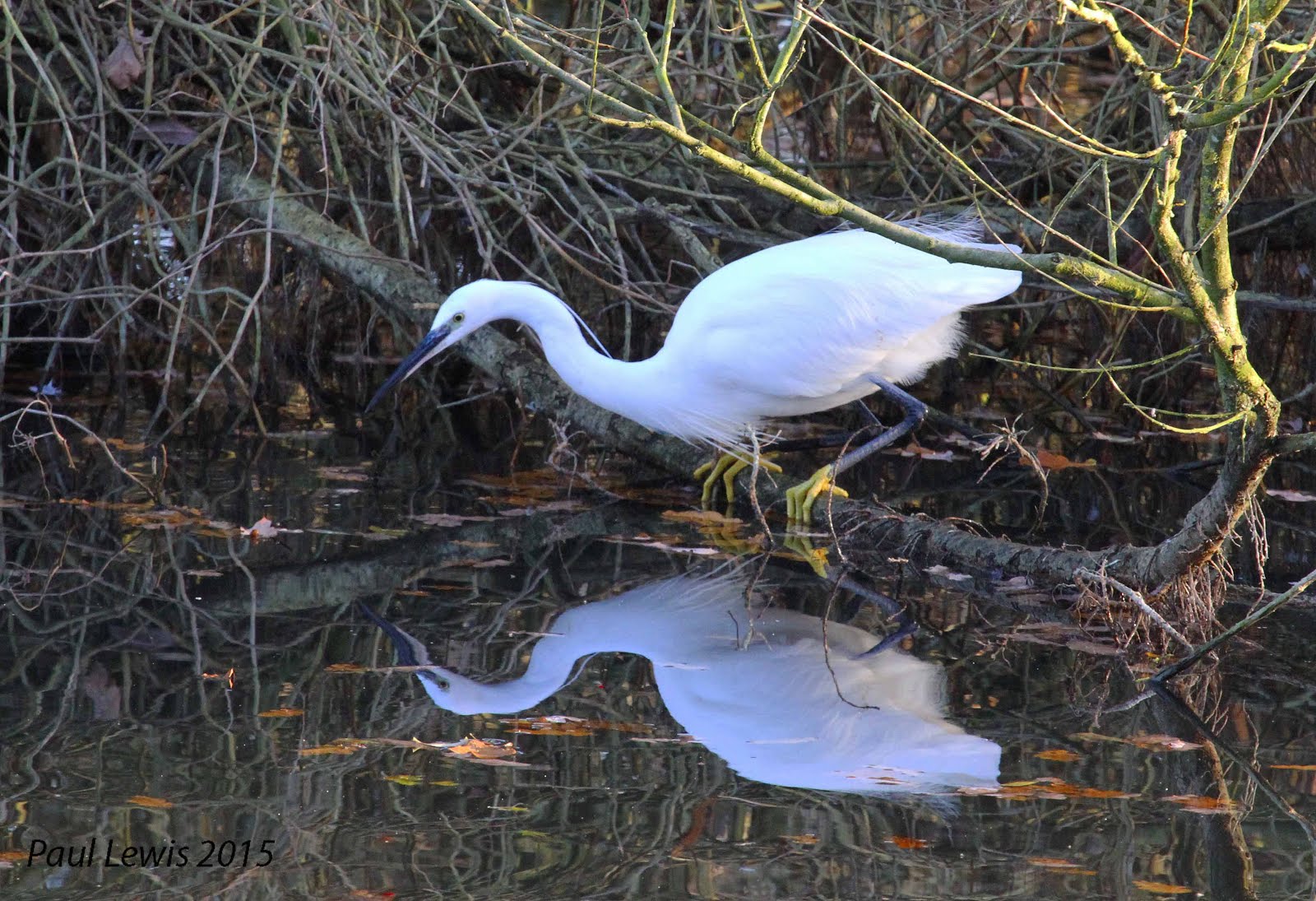
Friday 28 February 2014
Boat-tailed Grackles at Paradise Island update
If you had read my previous post from my recent trip to the Bahamas you would know that I found three female Boat-tailed Grackles on Paradise Island. This species is not mentioned in any of the bird guides for this region so I suspected my record to be unusual. I contacted Tony White who has confirmed my suspicions. Apparently the first Grackles were observed in the Bahamas about four years ago and to date they have been found only on Grand Bahama and New Providence (including Paradise Island). It is believed they originate from Florida and arrive on ships. The port of Nassau has daily visits from cruise liners with many arriving from Florida. There is no evidence of any breeding in the Bahamas but if there was then there is the potential of them becoming a harmful invasive species. The Boat-tailed Grackle is omnivorous and will eat anything from seeds and fruits to lizards and even small birds.
Thursday 27 February 2014
Maple Lodge Nature Reserve
An afternoon visit with birding pal Steve Carter produced the following species of note:-
Little Grebe (6), Great-crested Grebe (1), Mute Swan (2), Gadwall (c8), Common Teal (2), Mallard (c8), Northern Shoveler (1), Common Pochard (9), Tufted Duck (c10), Water Rail (1), Red Kite (1), Common Buzzard (1), Common Kingfisher (1), Ring-necked Parakeet (1), Green Woodpecker (3 on cricket pitch), Great-spotted Woodpecker (2), Redwing (2), Cetti's Warbler (1), Common Treecreeper (1), Reed Bunting (2). From Lynsters Hide 2 Egyptian Goose were observed on the cattle field at Lynsters Farm.
Little Grebe
Little Grebe (6), Great-crested Grebe (1), Mute Swan (2), Gadwall (c8), Common Teal (2), Mallard (c8), Northern Shoveler (1), Common Pochard (9), Tufted Duck (c10), Water Rail (1), Red Kite (1), Common Buzzard (1), Common Kingfisher (1), Ring-necked Parakeet (1), Green Woodpecker (3 on cricket pitch), Great-spotted Woodpecker (2), Redwing (2), Cetti's Warbler (1), Common Treecreeper (1), Reed Bunting (2). From Lynsters Hide 2 Egyptian Goose were observed on the cattle field at Lynsters Farm.
Little Grebe
Saturday 22 February 2014
The Northern Bahamas February 2014
Despite this being a family holiday I was able to conduct some birding outings around the local area and beyond. Our base for the week was the Paradise Island Harbour Resort Hotel located on Paradise Island (formerly Hogg Island) adjacent New Providence Island, Nassau. The Islands are connected by two bridges that span Nassau Harbour the first built in 1966 the second during the 1990's. There is also a small ferry service which runs half hourly between Nassau Town Centre and Paradise Island. Most mornings I would walk from the hotel towards Cabbage Beach passing two small lakes known locally as Twin Lakes. These lakes held many wetland species including the endemic White-cheeked Pintail.
White-cheeked Pintail.
Green Heron
Great Egret
Tricoloured Heron
Least Grebe
Neotropic Cormorant
Louisiana Waterthrush.
At Cabbage beach I discovered several species of Gull and wader feeding along the sandy shoreline and rocky outcrops.
American Herring Gull, possible third winter.
Lesser Black-backed Gull, adult.
Lesser Black-backed Gull, possible third winter.
Ring-billed Gull, adult.
Ring-billed Gull, possible second winter.
Laughing Gull, non breeding adult.
Piping Plover
Black-bellied (Grey) Plover
Kildeer
Ruddy Turnstone and Sanderling
Returning to the hotel I discovered a small patch of scrub land that was probably once a garden at Harbour Ridge Road where I observed Bahama Woodstar and Western Spindalis most days.
Bahama Woodstar adult female
Western Spindalis female
A must for all visiting birders to New Providence and Nassau is to tour The Bahamas National Trust, The Retreat. An eleven acre garden of rare and exotic palms and native coppice an ideal habitat for uncommon and rarer bird species. We visited late morning and was pleasantly surprised to have the place to ourselves.
The staff were very friendly and informative and issued us with a small guide to the gardens which included a brief description of some of the bird species to be seen.
Species of note observed included Caribbean Dove, Yellow-throated Vireo, Red-legged Thrush, Black and White Warbler, Prairie Warbler, Ovenbird, Cuban Grassquit and Greater Antillean Bullfinch.
Caribbean Dove, a shy introduced species.
Cuban Grassquit.
White-crowned Pigeon
Yellow-throated Vireo
One day while conducting my morning walk to Cabbage Beach I happened across 3 female Boat-tailed Grackle feeding on a hotel lawn. This species is not listed in my bird guide Birds of The Bahamas and the Turks & Caicos Islands by Bruce Hallett. I have seen them on numerous occasions while holidaying in Florida.
Boat-tailed Grackle
Another location that promised to be good for birds was the Botanical Gardens, Nassau. On arrival I was very disappointed with its present condition with the ponds unkempt and holding little water and the whole site looking run down. There wasn't too much in the way of flowering plants and the nearby Humane Society seem to use the area as their dog exercising park. Despite this I sat quietly near the smaller of the two ponds in hope that a few birds may come down to drink. This turned out to be a good ploy as after a few minutes I was rewarded with views of La Sagra's Flycatcher, Grey Catbird, Northern Parula, Bahama Woodstar, Bananaquit and two Sulphur Crested Cockatoo that I presume have escaped from the nearby Ardastra Gardens and Zoo. So after my initial apprehensions and disappointment the gardens still seem to hold good numbers of birds.
La Sagra's Flycatcher
Northern Parula
Sulphur Crested Cockatoo
Other wildlife visible during my visit was a lone Cuban Tree Frog that was present above the small pond and several red dragonflies.
Cuban Tree Frog
Later in the day I returned to Twin Lakes with my wife and daughter who enjoyed feeding the Terrapins and fish from the little jetty while I grabbed a few more precious moments birding. On returning back to the hotel as dusk was drawing in, my daughter pointed out a bird that was skulking in the undergrowth, to my delight it was a Bahama Mockingbird my first and only for the holiday and a lifer too. My daughter enjoyed a very happy evening knowing she had seen it before me.
Bahama Mockingbird
On the final day of our holiday we briefly visited the nearby Versailles Gardens and French Cloister which is a photogenic place used regularly for weddings. It also has two small ponds which held at least one Green Heron plus other already listed species. We then returned to Twin Lakes to feed the Terrapins for a final time before spending the remainder of the day around the pool area of our hotel. After having a relaxing day and as we were packing our things away ready for our departure I spotted a lone Yellow-bellied Sapsucker on the trunk of a palm, a new lifer and a fitting end to the holiday.
Green Heron
Yellow-bellied Sapsucker
A full list of species observed is produced below:-
1. White-cheeked Pintail. Regularly observed at Twin Lakes.
2. Blue-winged Teal. Two male observed at Twin Lakes.
3. Mallard. Two female regularly at Twin Lakes.
4. Least Grebe. Pair with 3 young observed at Twin Lakes.
5. Pied-billed Grebe. One observed at Twin Lakes.
6. Neotropic Cormorant. Several observed at Twin Lakes.
7. Magnificent Frigatebird. Two singles observed over Nassau Harbour on separate days.
8. Little Blue Heron. One observed at Twin Lakes.
9. Great Blue Heron. Two regularly observed at Twin Lakes.
10. Great Egret. Several observed at Twin Lakes.
11. Snowy Egret. One at Twin Lakes.
12. Tricoloured Heron. Two at Twin Lakes.
13. Green Heron. Common at most wetland areas.
14. Black-crowned Night Heron. One observed at Twin Lakes.
15. Common Gallinule. Common at most wetland areas.
16. American Coot. Observed at Lake Killarney from Taxi.
17. Kildeer. Seven on rocky outcrop at Cabbage Beach.
18. Black-bellied Plover. 57 on rocky outcrop at Cabbage Beach.
19. Piping Plover. One at Cabbage Beach.
20. Ruddy Turnstone. 14 at Cabbage Beach.
21. Sanderling. Several on rocky outcrop at Cabbage Beach.
22. Laughing Gull. Common regularly observed.
23. Ring-billed Gull. Common at Cabbage Beach.
24. American Herring Gull. Several at Cabbage Beach.
25. Lesser Black-backed Gull. Several at Cabbage Beach.
26. Royal Tern. Two observed at Salt Cay.
27. Forsters Tern. One observed at Junkanoo Beach.
28. Osprey. Two regularly at Twin Lakes.
29. American Kestrel. Common, regularly observed.
30. Merlin. Two briefly over Cabbage Beach.
31. Feral Rock Dove. Common in urban areas and at Cabbage Beach.
32. White-crowned Pigeon. Fairly common but very secretive.
33. Eurasian Collared Dove. Common all areas.
34. Mourning Dove. Fairly common regularly observed on Paradise Island.
35. Common Ground Dove. Common, regularly observed.
36. Caribbean Dove. Several observed at Bahamas National Trust The Retreat.
37. Sulphur Crested Cockatoo. Two of presumed captive origin at Nassau Botanical Gardens.
38. Smooth-billed Ani. Common, regularly observed.
39. Bahama Woodstar. Common, regularly observed.
40. Belted Kingfisher. At least two regularly observed at Twin Lakes.
41. La Sagra's Flycatcher. One observed at Nassau Botanical Gardens.
42. Loggerhead Kingbird. Two observed near Harbour Drive, Paradise Island.
43. Yellow-throated Vireo. One observed at Bahamas National Trust The Retreat.
44. Red-legged Thrush. Common at Twin Lakes and Bahamas National Trust The Retreat.
45. Northern Mockingbird. Common, regularly observed.
46. Bahama Mockingbird. One observed near Twin Lakes.
47. Grey Catbird. Singles observed at Twin Lakes and Nassau Botanical Gardens.
48. Boat-tailed Grackle. Three female observed near Lake View Drive.
49. Bahama Yellowthroat. One observed at Twin Lakes.
50. Northern Parula. Singles observed at Twin Lakes and Nassau Botanical Gardens.
51. Yellow-rumped Warbler. Several observed at Twin Lakes.
52. Prairie Warbler. Observed at Twin Lakes, Nassau Botanical Gardens and Bahamas National Trust The Retreat.
53. Palm Warbler. Two observed at Twin Lakes.
54. Black and White Warbler. Observed at Twin Lakes and Bahamas National Trust The Retreat.
55. American Redstart. Two observed at Twin Lakes.
56. Louisiana Waterthrush. At least two observed at Twin Lakes.
57. Ovenbird. Two observed at Bahamas National Trust The Retreat.
58. Bananaquit. Several observed at Twin Lakes and Salt Cay.
59. Western Spindalis. At least two regularly observed at Harbour Ridge Drive, Paradise Island.
60. Cuban Grassquit. At least two observed at Bahamas National Trust The Retreat.
61. Black-faced Grassquit. Regularly observed at Twin Lakes.
62. Greater Antillean Bullfinch. One observed at Bahamas National Trust The Retreat.
63. House Sparrow. Common at all urban areas.
64. Yellow-bellied Sapsucker. One at Paradise Harbour Resort.
White-cheeked Pintail.
Green Heron
Great Egret
Tricoloured Heron
Least Grebe
Neotropic Cormorant
Louisiana Waterthrush.
At Cabbage beach I discovered several species of Gull and wader feeding along the sandy shoreline and rocky outcrops.
American Herring Gull, possible third winter.
Lesser Black-backed Gull, adult.
Lesser Black-backed Gull, possible third winter.
Ring-billed Gull, adult.
Ring-billed Gull, possible second winter.
Laughing Gull, non breeding adult.
Piping Plover
Black-bellied (Grey) Plover
Kildeer
Ruddy Turnstone and Sanderling
Returning to the hotel I discovered a small patch of scrub land that was probably once a garden at Harbour Ridge Road where I observed Bahama Woodstar and Western Spindalis most days.
Bahama Woodstar adult female
Western Spindalis female
A must for all visiting birders to New Providence and Nassau is to tour The Bahamas National Trust, The Retreat. An eleven acre garden of rare and exotic palms and native coppice an ideal habitat for uncommon and rarer bird species. We visited late morning and was pleasantly surprised to have the place to ourselves.
The staff were very friendly and informative and issued us with a small guide to the gardens which included a brief description of some of the bird species to be seen.
Species of note observed included Caribbean Dove, Yellow-throated Vireo, Red-legged Thrush, Black and White Warbler, Prairie Warbler, Ovenbird, Cuban Grassquit and Greater Antillean Bullfinch.
Caribbean Dove, a shy introduced species.
Cuban Grassquit.
White-crowned Pigeon
Yellow-throated Vireo
One day while conducting my morning walk to Cabbage Beach I happened across 3 female Boat-tailed Grackle feeding on a hotel lawn. This species is not listed in my bird guide Birds of The Bahamas and the Turks & Caicos Islands by Bruce Hallett. I have seen them on numerous occasions while holidaying in Florida.
Boat-tailed Grackle
Another location that promised to be good for birds was the Botanical Gardens, Nassau. On arrival I was very disappointed with its present condition with the ponds unkempt and holding little water and the whole site looking run down. There wasn't too much in the way of flowering plants and the nearby Humane Society seem to use the area as their dog exercising park. Despite this I sat quietly near the smaller of the two ponds in hope that a few birds may come down to drink. This turned out to be a good ploy as after a few minutes I was rewarded with views of La Sagra's Flycatcher, Grey Catbird, Northern Parula, Bahama Woodstar, Bananaquit and two Sulphur Crested Cockatoo that I presume have escaped from the nearby Ardastra Gardens and Zoo. So after my initial apprehensions and disappointment the gardens still seem to hold good numbers of birds.
La Sagra's Flycatcher
Northern Parula
Sulphur Crested Cockatoo
Other wildlife visible during my visit was a lone Cuban Tree Frog that was present above the small pond and several red dragonflies.
Cuban Tree Frog
Later in the day I returned to Twin Lakes with my wife and daughter who enjoyed feeding the Terrapins and fish from the little jetty while I grabbed a few more precious moments birding. On returning back to the hotel as dusk was drawing in, my daughter pointed out a bird that was skulking in the undergrowth, to my delight it was a Bahama Mockingbird my first and only for the holiday and a lifer too. My daughter enjoyed a very happy evening knowing she had seen it before me.
Bahama Mockingbird
On the final day of our holiday we briefly visited the nearby Versailles Gardens and French Cloister which is a photogenic place used regularly for weddings. It also has two small ponds which held at least one Green Heron plus other already listed species. We then returned to Twin Lakes to feed the Terrapins for a final time before spending the remainder of the day around the pool area of our hotel. After having a relaxing day and as we were packing our things away ready for our departure I spotted a lone Yellow-bellied Sapsucker on the trunk of a palm, a new lifer and a fitting end to the holiday.
Green Heron
Yellow-bellied Sapsucker
A full list of species observed is produced below:-
1. White-cheeked Pintail. Regularly observed at Twin Lakes.
2. Blue-winged Teal. Two male observed at Twin Lakes.
3. Mallard. Two female regularly at Twin Lakes.
4. Least Grebe. Pair with 3 young observed at Twin Lakes.
5. Pied-billed Grebe. One observed at Twin Lakes.
6. Neotropic Cormorant. Several observed at Twin Lakes.
7. Magnificent Frigatebird. Two singles observed over Nassau Harbour on separate days.
8. Little Blue Heron. One observed at Twin Lakes.
9. Great Blue Heron. Two regularly observed at Twin Lakes.
10. Great Egret. Several observed at Twin Lakes.
11. Snowy Egret. One at Twin Lakes.
12. Tricoloured Heron. Two at Twin Lakes.
13. Green Heron. Common at most wetland areas.
14. Black-crowned Night Heron. One observed at Twin Lakes.
15. Common Gallinule. Common at most wetland areas.
16. American Coot. Observed at Lake Killarney from Taxi.
17. Kildeer. Seven on rocky outcrop at Cabbage Beach.
18. Black-bellied Plover. 57 on rocky outcrop at Cabbage Beach.
19. Piping Plover. One at Cabbage Beach.
20. Ruddy Turnstone. 14 at Cabbage Beach.
21. Sanderling. Several on rocky outcrop at Cabbage Beach.
22. Laughing Gull. Common regularly observed.
23. Ring-billed Gull. Common at Cabbage Beach.
24. American Herring Gull. Several at Cabbage Beach.
25. Lesser Black-backed Gull. Several at Cabbage Beach.
26. Royal Tern. Two observed at Salt Cay.
27. Forsters Tern. One observed at Junkanoo Beach.
28. Osprey. Two regularly at Twin Lakes.
29. American Kestrel. Common, regularly observed.
30. Merlin. Two briefly over Cabbage Beach.
31. Feral Rock Dove. Common in urban areas and at Cabbage Beach.
32. White-crowned Pigeon. Fairly common but very secretive.
33. Eurasian Collared Dove. Common all areas.
34. Mourning Dove. Fairly common regularly observed on Paradise Island.
35. Common Ground Dove. Common, regularly observed.
36. Caribbean Dove. Several observed at Bahamas National Trust The Retreat.
37. Sulphur Crested Cockatoo. Two of presumed captive origin at Nassau Botanical Gardens.
38. Smooth-billed Ani. Common, regularly observed.
39. Bahama Woodstar. Common, regularly observed.
40. Belted Kingfisher. At least two regularly observed at Twin Lakes.
41. La Sagra's Flycatcher. One observed at Nassau Botanical Gardens.
42. Loggerhead Kingbird. Two observed near Harbour Drive, Paradise Island.
43. Yellow-throated Vireo. One observed at Bahamas National Trust The Retreat.
44. Red-legged Thrush. Common at Twin Lakes and Bahamas National Trust The Retreat.
45. Northern Mockingbird. Common, regularly observed.
46. Bahama Mockingbird. One observed near Twin Lakes.
47. Grey Catbird. Singles observed at Twin Lakes and Nassau Botanical Gardens.
48. Boat-tailed Grackle. Three female observed near Lake View Drive.
49. Bahama Yellowthroat. One observed at Twin Lakes.
50. Northern Parula. Singles observed at Twin Lakes and Nassau Botanical Gardens.
51. Yellow-rumped Warbler. Several observed at Twin Lakes.
52. Prairie Warbler. Observed at Twin Lakes, Nassau Botanical Gardens and Bahamas National Trust The Retreat.
53. Palm Warbler. Two observed at Twin Lakes.
54. Black and White Warbler. Observed at Twin Lakes and Bahamas National Trust The Retreat.
55. American Redstart. Two observed at Twin Lakes.
56. Louisiana Waterthrush. At least two observed at Twin Lakes.
57. Ovenbird. Two observed at Bahamas National Trust The Retreat.
58. Bananaquit. Several observed at Twin Lakes and Salt Cay.
59. Western Spindalis. At least two regularly observed at Harbour Ridge Drive, Paradise Island.
60. Cuban Grassquit. At least two observed at Bahamas National Trust The Retreat.
61. Black-faced Grassquit. Regularly observed at Twin Lakes.
62. Greater Antillean Bullfinch. One observed at Bahamas National Trust The Retreat.
63. House Sparrow. Common at all urban areas.
64. Yellow-bellied Sapsucker. One at Paradise Harbour Resort.
Subscribe to:
Posts (Atom)


